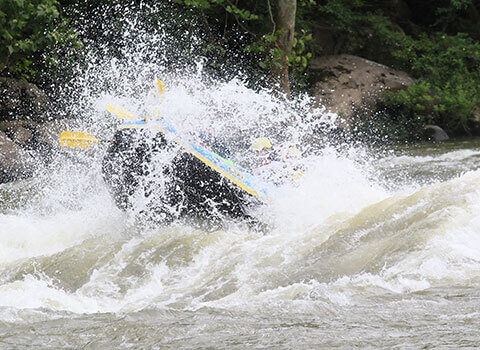Many outdoor enthusiasts are turned off by the idea of stepping foot into cold water of winter and early spring. Contrary to popular belief, paddling in cold weather is doable and even fun. Cool air and water can be overlooked if you dress accordingly, but paying close attention to safety is the most important factor while paddling in cold water. The effects cold water can have on your body if your boat gets capsized are detrimental. Before you try cold water paddling, make yourself aware of the dangers and gauge your skill level before taking your boat out on the water in the frosty air. Read on for tips on how to be prepared and paddle safely in cold water.
Our top tips for a successful cold weather paddling trip:
Know Your Skill Level
Before taking your boat out, it’s important to gauge your paddling skill level. Do you feel confident in your abilities as a paddler? Would you know what to do if you or one of your partner’s boats capsized? The chances of falling out of your kayak do not increase as the weather gets colder, but the consequences of capsizing are far worse due to the cold water and air. Whether it’s being confident in your ability to climb back into your boat after you’ve capsized or developing a good bracing technique, it’s important to perfect these techniques in warmer weather so you’re more prepared to take on cold water. If you do not feel 100% confident in your abilities, consider waiting until the weather warms up to get out and paddle.
Bring the Right Clothing and Gear
What you wear while winter paddling determines how comfortable you will be as your day of paddling progresses. Dress for the water temperature, even if you don’t plan on getting wet. Consider your own individual cold tolerance and dress accordingly, preferably in layers. The purpose of cold weather paddling gear is to keep you both warm and dry. It is not recommended to wear cotton or denim because they do not dry quickly and can feel very heavy when wet. A wetsuit is always a safe choice, depending on your location. If wearing a wet suit is not an option, dress in dri-fit layers that you can remove if they get wet.
Take Precaution
As previously stated, cold air doesn’t make water conditions any different, it’s the effects of capsizing into freezing water that makes winter paddling less safe than warmer seasons. Be sure to check weather conditions before you leave and always be sure to bring an experience partner along with you. Paddling in the winter means that there will be less people on the water, so you must be able to rely on yourself and your experienced partner if something were to go wrong. Remember to bring snacks and water to keep your energy levels high. Last, but certainly not least, ALWAYS wear a life jacket.
Paddling in cold weather can certainly be a challenge, but with the right preparation and knowledge, it can be a great experience! Remember that paddling in the winter is recommended for advanced paddlers. If you are not confident in your abilities, wait until the weather gets warmer to perfect your skills. For more info on kayaks, canoes, and gear, visit Austin Kayak today!






